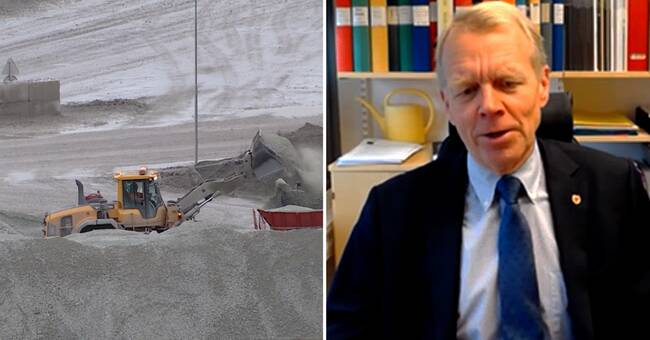The cement crisis is a fact in Sweden if Cementa's factory in Slite on Gotland were not allowed to continue the lime mining.
The plant is estimated to account for about 65 percent of the cement used in the country.
And a production stoppage, which threatens the factory, would have major effects on Sweden's mining, construction and infrastructure projects, according to researchers SVT has spoken with.
- If there is a stop at the cement factory in Slite, it will have very big consequences in the short term, it can not be ignored.
It is not possible to replace the cement with something else in a short time, says Johan Silfwerbrand, professor of concrete construction at KTH.
He has long researched and taught about the importance of concrete for construction in Sweden and describes a possible closure of Cementa as part 22.
- Concrete has a strong position in our built environment.
Wood construction has increased in recent years, but it is still less than concrete construction.
But even a wooden house stands on a foundation of concrete.
So even if all the houses were made of wood, concrete would still be required for foundation, he says.
"Is about annual volumes"
Several large infrastructure projects are underway or are planned in the country that are completely dependent on cement.
Johan Silfwerbrand points, among other things, to Slussenbygget and the road project Förbifart Stockholm, as well as recently proposed high-speed lines that all risk being affected.
- Only it is about several annual volumes, he says.
In addition to production in Slite, 20 percent of the country's cement is produced in Skövde, the last 15 are imported from abroad.
But compensating for a production stoppage on Gotland with an increased import volume is not a given alternative, according to Johan Silwerbrand.
The cement from Slite is of a quality that is used in the construction of bridges and facilities, which places extra high demands on the products.
It would also take too long, up to two to three years, before the logistics chain is in full swing and at the same time make Sweden dependent on foreign countries.
- There is no shortage of cement in Europe, but there is also no surplus.
What is produced is used.
On the other hand, maybe we can buy from China, but there we know even less about what they have in their cements and in what ways they are made, says Johan Silwerbrand.
The option to restart old quarries, or start new ones, is also too time-consuming and costly, he says.
- It's about million investments.
And I think a revival would take ten years, says Johan Silwerbrand.
Sees benefits
Holger Wallbaum is a professor of sustainable construction in architecture and civil engineering at Chalmers.
He believes that a cement halt could force an acceleration of the transition to alternative building materials, such as wood and hybrid solutions.
- We are losing jobs, but it also increases the potential for new solutions. If politicians were to support the adjustment process, we would not suffer so much from canceled infrastructure processes and infrastructure projects. We pay financially if we do not reduce climate emissions, he says.

